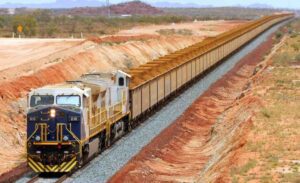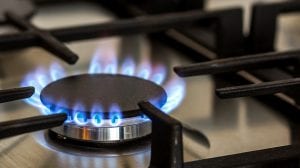Launceston Airport may be in for a green energy makeover as a new partnership with Countrywide Hydrogen was announced today that could see ‘green’ hydrogen being produced on-site.
Countrywide, a subsidiary of ASX-listed ReNu Energy, says it will investigate the feasibility of generating hydrogen through the electrolysis of water, using solar power generated on disused airport land, to produce a fully-green hydrogen fuel.
Countrywide already has major hydrogen projects in the pipeline, including the Melbourne Hydrogen Hub, a partnership with the Tasmanian government to introduce hydrogen to the energy sector in the north of the state, and the Hydrogen Portland project in southwest Victoria, all of which are still under discussion.
The company says hydrogen production onshore in Tasmania could support the decarbonisation of the state’s heavy transport industry – that’s important, since transport and logistics make up around 6% of the state’s economic output.
Though hydrogen-powered trucks are still in their infancy, a flurry of new trials of hydrogen-powered trucks have been announced this year, including Australia’s first hydrogen-fuelled garbage trucks, slated to hit Queensland streets by the end of this year.
There are also hydrogen-fuelled trucks for the transportation of zinc from the Sun Metals refinery in Townsville, Queensland, which are expected to arrive in December.
Not all hydrogen is created equally, though. The hydrogen that will power Pure Hydrogen and JJ’s Waste & Recycling’s Queensland garbage-truck trial, for example, is so-called ‘blue’ hydrogen, made by steam reforming using natural gas, with the resultant CO2 emissions either off-set or sequestered.
Countrywide, on the other hand, will look to produce fully-green hydrogen, with no GHG emissions at any point in the production chain.
Countrywide also says the use of behind-the-meter solar power to produce the hydrogen will make the fuel cheaper and more competitive.
“We are incredibly excited by the number of complementary hub opportunities this collaboration could afford Northern Tasmania, including on-site hydrogen refuelling for bus and truck operators looking to decarbonise their vehicle fleet, while offering fuel cell vehicle servicing, maintenance and upskilling diesel mechanics and technicians,” said Geoff Drucker, Countrywide managing director.
Launceston Airport CEO Shane O’Hare said that, if successful, the project would support the company’s emissions reduction targets.
“We have set a target of net-zero Scope 1 and 2 emissions by 2025, and this project could help us to achieve that through the provision of solar-powered electricity,” he said.
“It could also support our vision to develop a logistics hub at Western Junction encompassing road, rail and air. The ability for heavy transport to refuel here using hydrogen would support the Tasmanian Government’s emissions reduction targets.”
Tasmania’s Minister for Energy and Renewables, Guy Barnett, is optimistic about the project.
“Hydrogen is a burgeoning industry and Tasmania has plans to be a leading – and genuinely green – hydrogen producer,” Barnett said.
“Through our Future Gas Strategy and our Renewable Hydrogen Action Plan, the Tasmanian Government recognises that hydrogen will be an important enabler for the transition to a clean energy system, especially where electrification is not a feasible alternative.”
While the announcement is a boon for Tasmania’s status as the renewable energy powerhouse of Australia – the state was the first to run solely on renewable energy in 2020 – the hard graft now will be the preliminary works to investigate feasibility, financial modelling, land use and access and stakeholder negotiations.









